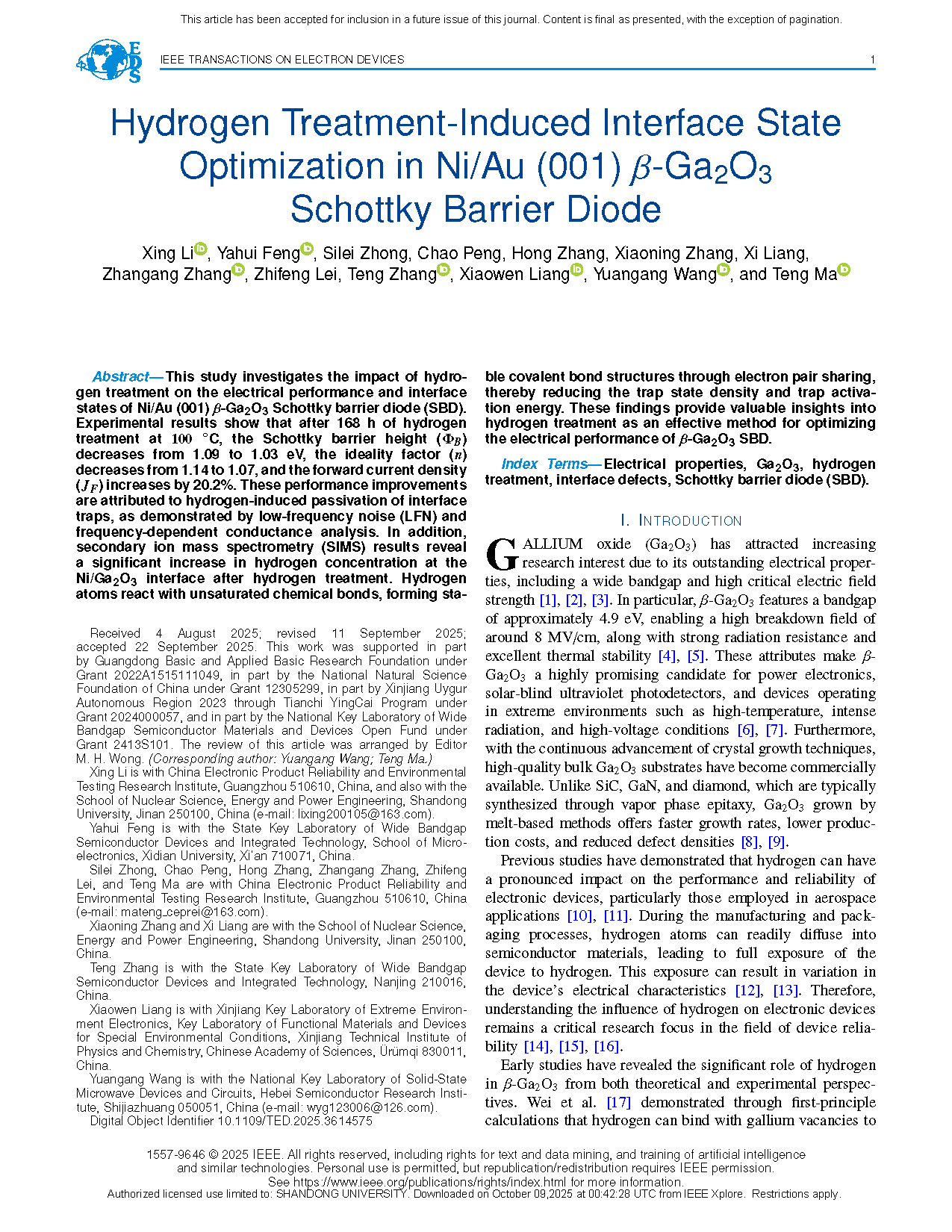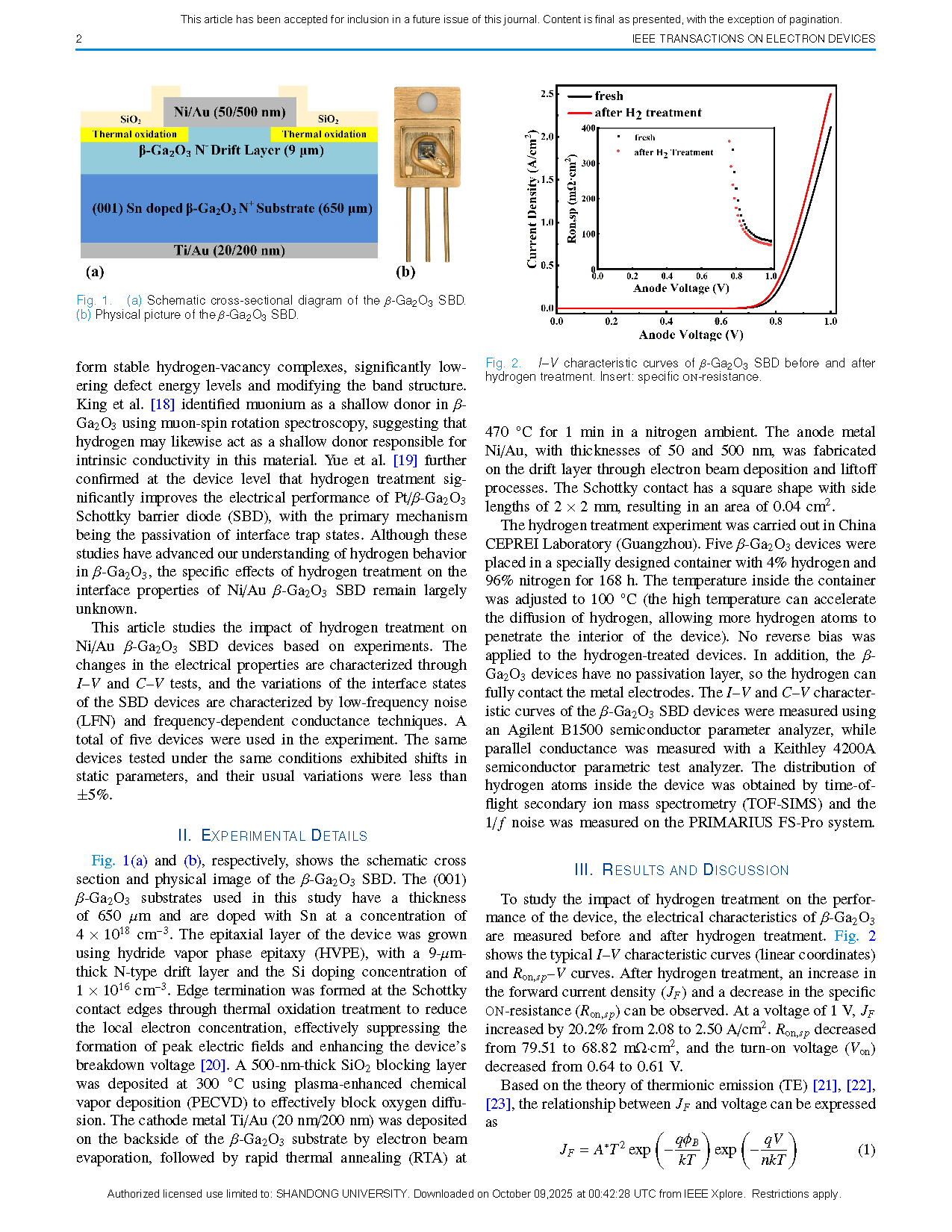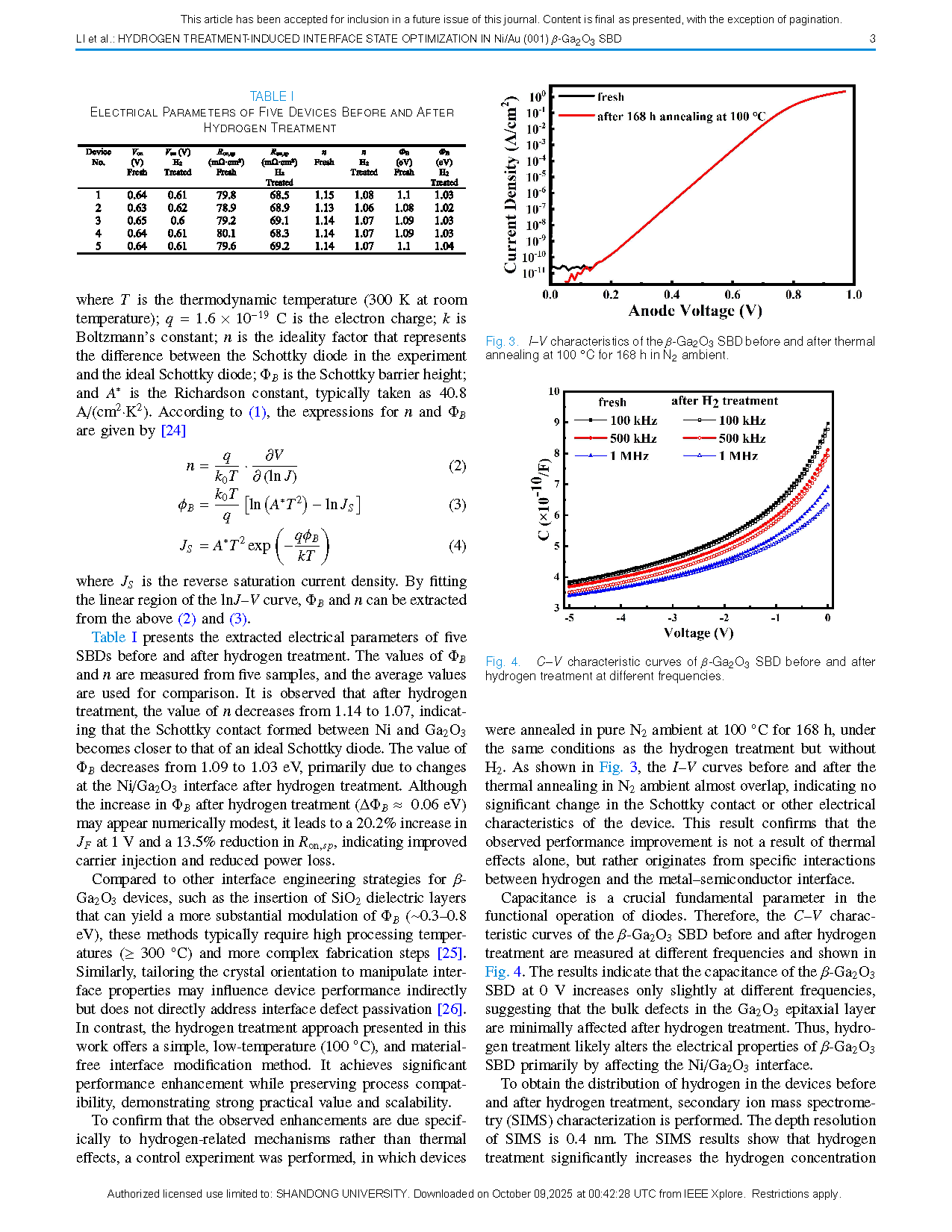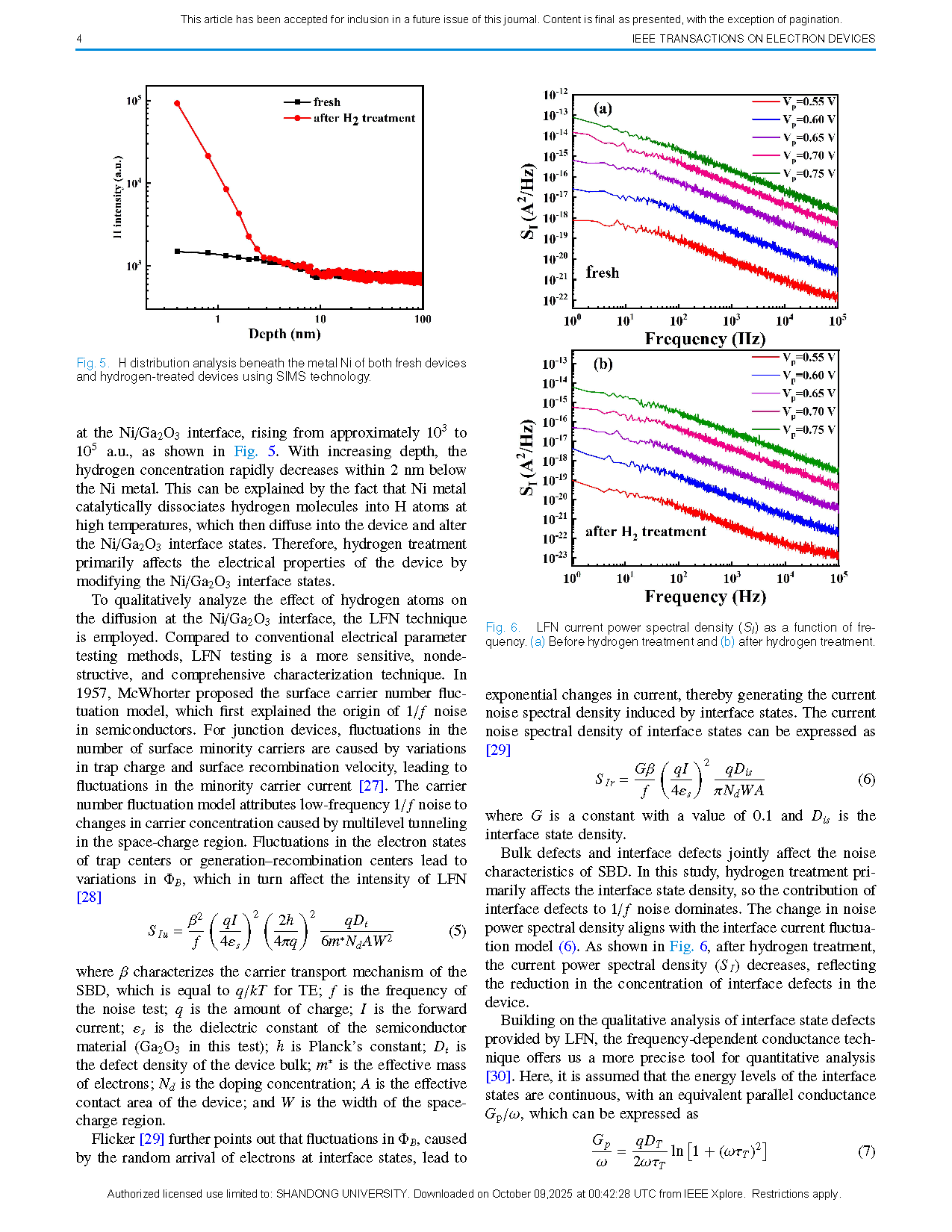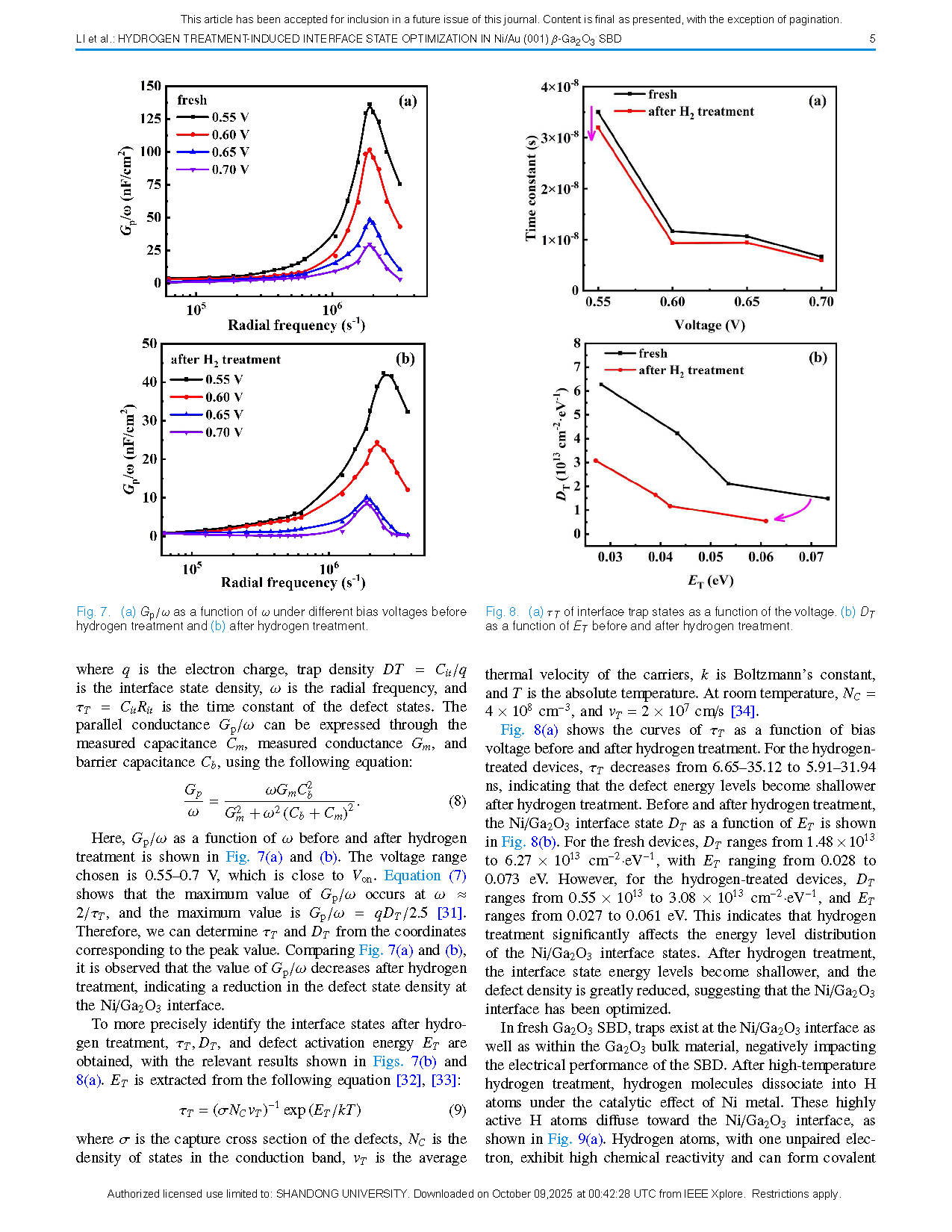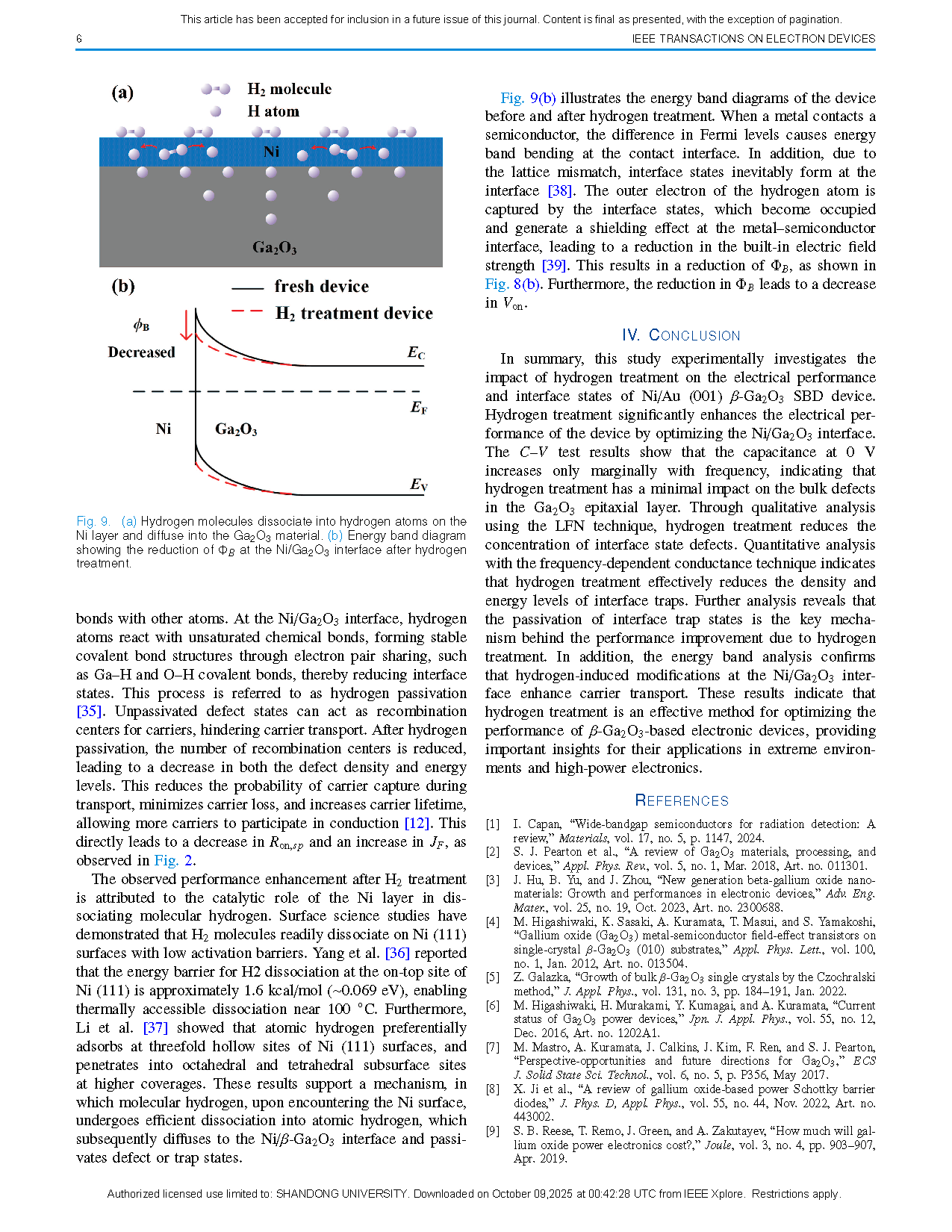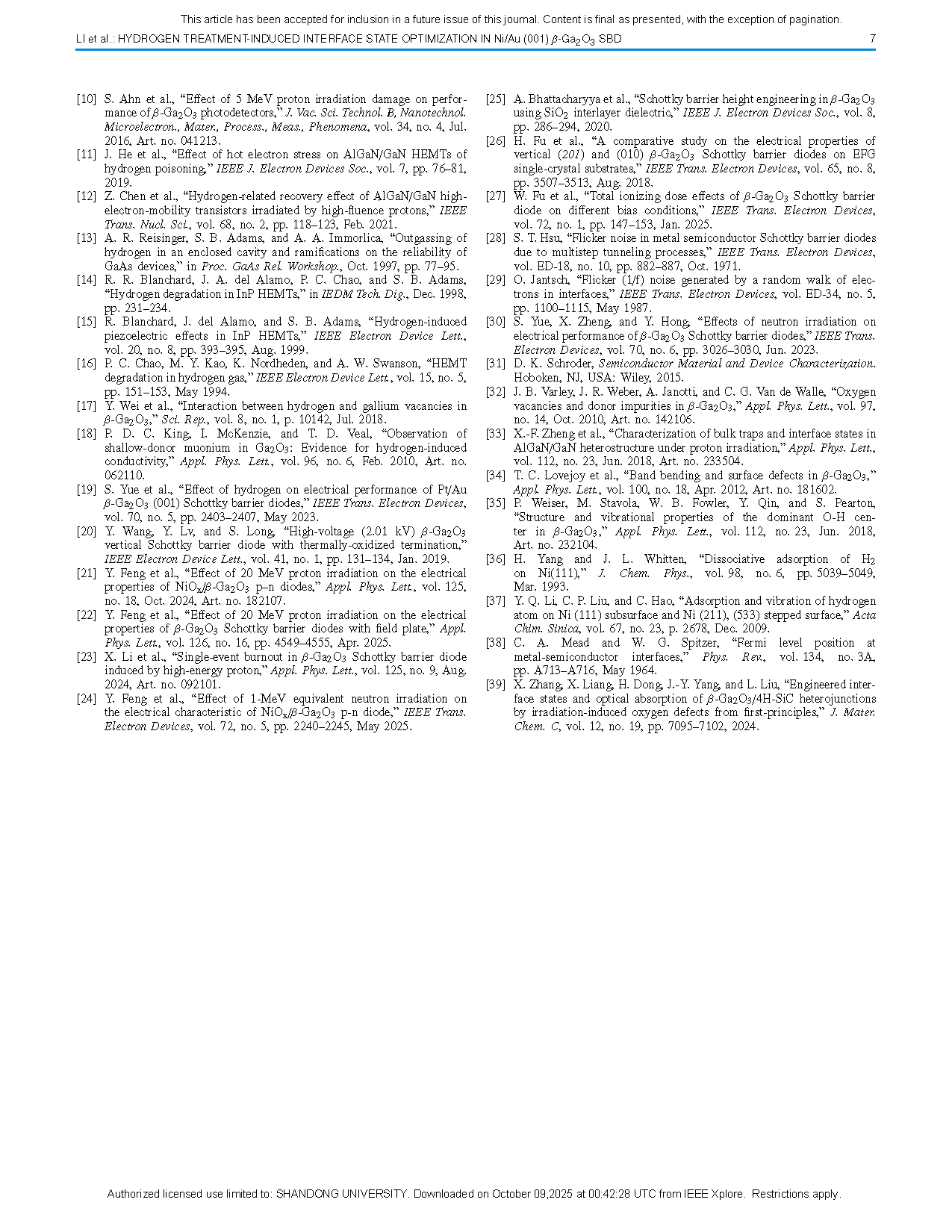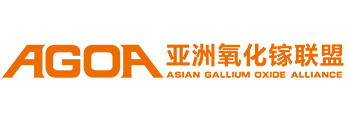

【Domestic Papers】Hydrogen Treatment-Induced Interface State Optimization in Ni/Au (001) β-Ga₂O₃ Schottky Barrier Diode
日期:2025-10-28阅读:135
Researchers from the China Electronic Product Reliability and Environmental Testing Research Institute have published a dissertation titled "Hydrogen Treatment-Induced Interface State Optimization in Ni/Au (001) β-Ga2O3 Schottky Barrier Diode" in IEEE Transactions on Electron Devices.
Project Support
This work was supported in part by Guangdong Basic and Applied Basic Research Foundation under Grant 2022A1515111049, in part by the National Natural Science Foundation of China under Grant 12305299.
Background
β-Ga₂O₃ has emerged as a promising material for power electronics and extreme environment applications due to its wide bandgap (~4.9 eV) and high critical electric field strength. However, interface defects at the metal-semiconductor junction can significantly degrade the performance of devices, especially Schottky barrier diodes (SBDs). Hydrogen treatment is known to be an effective method for passivating these defects, reducing interface state density, and improving carrier transport. Despite its potential, the specific effects of hydrogen treatment on Ni/Au (001) β-Ga₂O₃ SBDs remain largely unexplored. This study aims to investigate how hydrogen treatment influences the electrical properties and interface states of Ni/Au (001) β-Ga₂O₃ SBDs using various electrical characterization techniques, such as I-V and C-V tests.
Abstract
This study investigates the effects of hydrogen treatment on the electrical performance and interface states of Ni/Au (001) β-Ga₂O₃ Schottky barrier diodes (SBDs). Experimental results show that after 168 hours of hydrogen treatment at 100°C, the Schottky barrier height (ΦB) decreases from 1.09 eV to 1.03 eV, the ideality factor (n) decreases from 1.14 to 1.07, and the forward current density (JF) increases by 20.2%. These improvements in device performance are attributed to hydrogen-induced passivation of interface traps, as confirmed by low-frequency noise (LFN) and frequency-dependent conductance analysis. Secondary ion mass spectrometry (SIMS) analysis reveals a significant increase in hydrogen concentration at the Ni/Ga₂O₃ interface, confirming that hydrogen atoms react with unsaturated bonds at the interface, reducing trap density and optimizing the interface states. This study demonstrates that hydrogen treatment is an effective method for improving the performance of β-Ga₂O₃-based Schottky barrier diodes and provides valuable insights into its application in high-power and extreme environment electronics.
Conclusion
In conclusion, this study demonstrates the significant impact of hydrogen treatment on the electrical performance and interface states of Ni/Au (001) β-Ga₂O₃ Schottky barrier diodes. Hydrogen treatment effectively reduces the Schottky barrier height, ideality factor, and specific ON-resistance while enhancing the forward current density. These improvements are attributed to the passivation of interface traps, as confirmed by low-frequency noise (LFN) and frequency-dependent conductance analyses. Secondary ion mass spectrometry (SIMS) reveals a marked increase in hydrogen concentration at the Ni/Ga₂O₃ interface, further validating the hydrogen passivation mechanism. This work highlights the potential of hydrogen treatment as an effective, material-free, and low-temperature approach to optimize the performance of β-Ga₂O₃-based electronic devices, which could be beneficial for high-power and extreme environment applications.

Fig. 1. (a) Schematic cross-sectional diagram of the β-Ga2O3 SBD. (b) Physical picture of the β-Ga2O3 SBD.
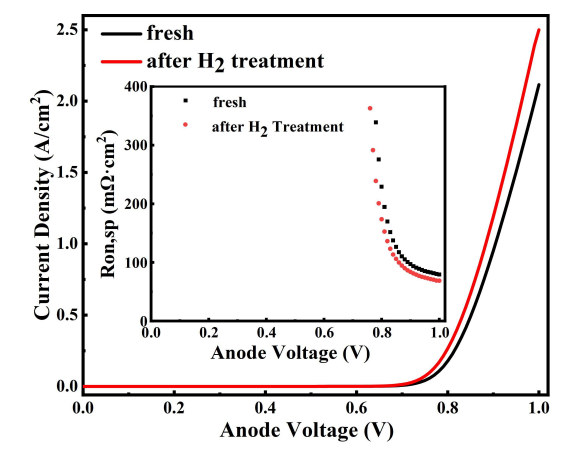
Fig. 2. I–V characteristic curves of β-Ga2O3 SBD before and after hydrogen treatment. Insert: specific ON-resistance.
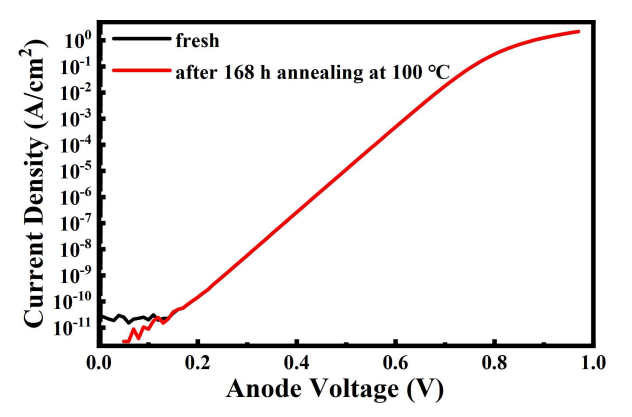
Fig. 3. I–V characteristics of the β-Ga2O3 SBD before and after thermal annealing at 100 °C for 168 h in N2 ambient.
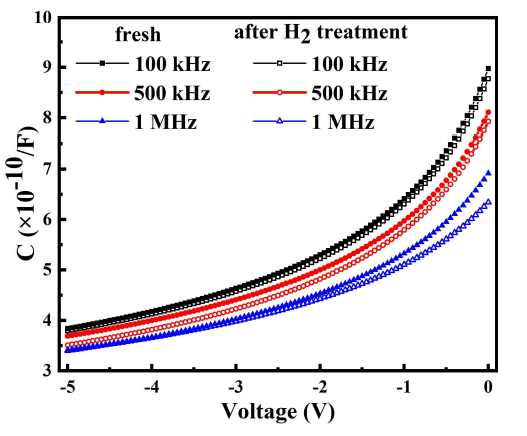
Fig. 4. C–V characteristic curves of β-Ga2O3 SBD before and after hydrogen treatment at different frequencies.
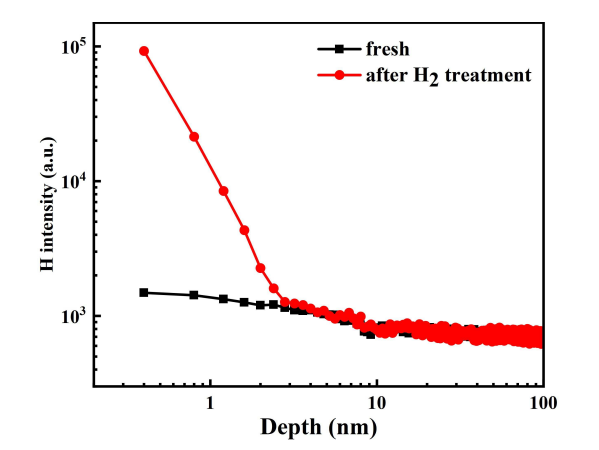
Fig. 5. H distribution analysis beneath the metal Ni of both fresh devices and hydrogen-treated devices using SIMS technology.
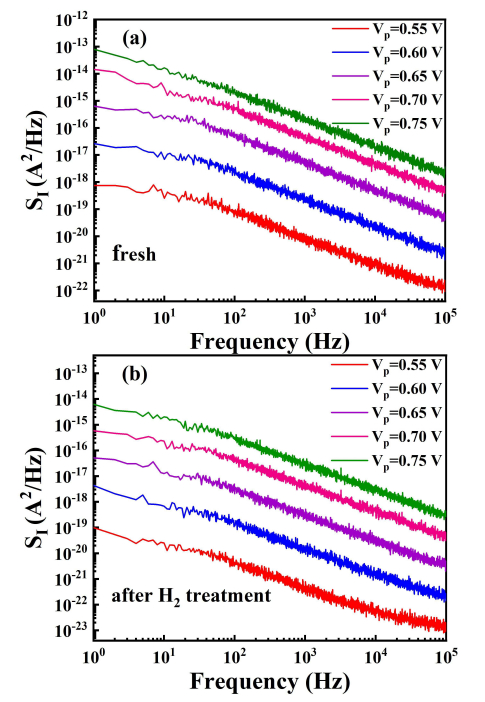
Fig. 6. LFN current power spectral density (SI) as a function of frequency. (a) Before hydrogen treatment and (b) after hydrogen treatment.
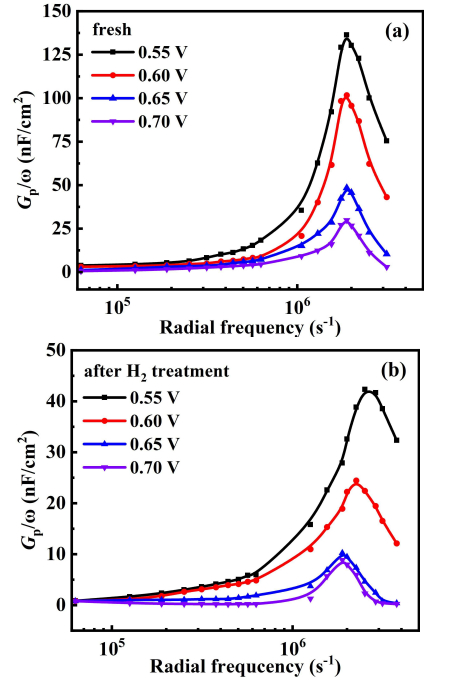
Fig. 7. (a) Gp/ω as a function of ω under different bias voltages before hydrogen treatment and (b) after hydrogen treatment.
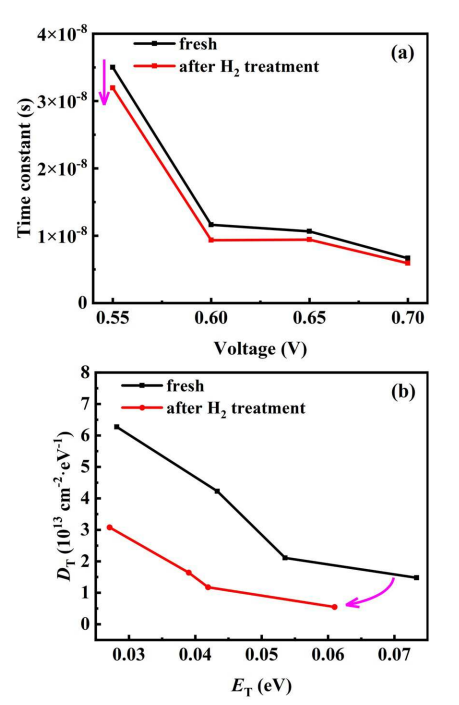
Fig. 8. (a) τT of interface trap states as a function of the voltage. (b) DT as a function of ET before and after hydrogen treatment.
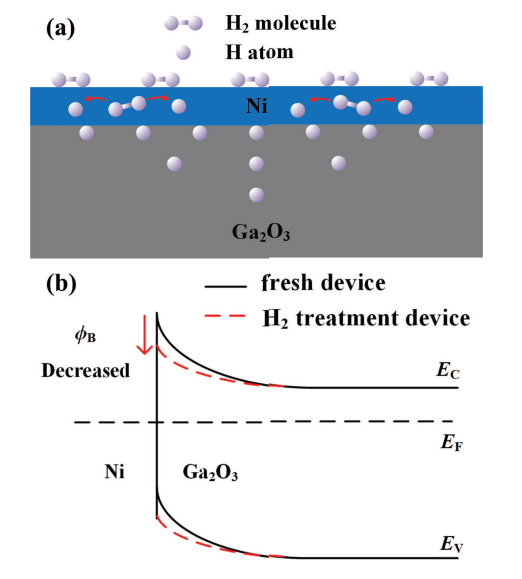
Fig. 9. (a) Hydrogen molecules dissociate into hydrogen atoms on the Ni layer and diffuse into the Ga2O3 material. (b) Energy band diagram showing the reduction of ΦB at the Ni/Ga2O3 interface after hydrogen treatment.
DOI:
doi.org/10.1109/TED.2025.3614575
